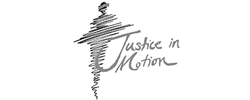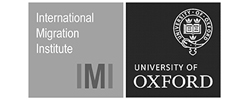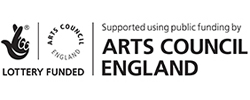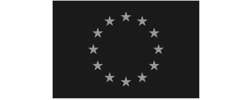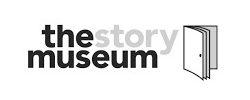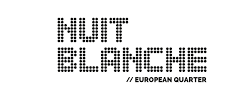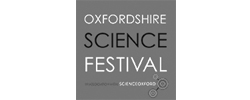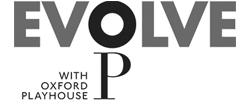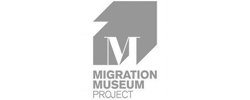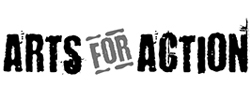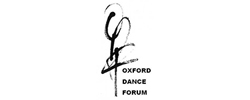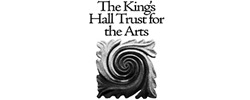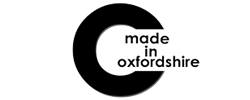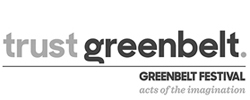A pilot phase
CONTAINED Project connects experience, research and creative learning to provoke thoughts and contribute to dialogues and greater understanding about migration.
CONTAINED Project began in 2016 as a collaboration between researcher Marieke van Houte of the International Migration Institute at the University of Oxford and Anja Meinhardt of physical theatre company Justice in Motion, together with storyteller and teacher Remco Heijmans and many collaborators.
In 2016, we developed a pilot phase of CONTAINED Project: a trilogy of immersive, physical and participatory performances and creative learning tools. We kicked off in January with a taster performance at the International Migration Institute’s 10th anniversary conference (see video to the left). In June, we developed Decisions and Journeys, which we performed at Oxford’s Pitt Rivers Museum and at the Oxfordshire Science Festival. In August, we performed CONTAINED – Pecking Order, on Movement and Change, at Wilderness Festival. In September, we held a Creative Lab at The Story Museum in Oxford. In October, we developed and performed The Extraordinary Queuing Experience, on Arrival and Reception, for Nuit Blanche Brussels. In December, we put the trilogy together into a showcase event at Lady Margaret Hall, Oxford.
From 2017, we will build on lessons learned during this pilot phase to expand our impact and audience.
This document is meant to show the tools we developed, share the lessons we learned, and to give you an idea of what CONTAINED Project could offer in the future.
Key objectives of CONTAINED Project
“Compassion to others can take us further than decisions based on irrational fears or ignoring facts”
(Audience member, Oxford, December 2016).
The trilogy: Three layers of engagement
CONTAINED refers to shipping containers, which provides a metaphor for what this project is about: The courage and risk in migrants’ and refugees’ journeys and means of transport; The global connectedness of our world; And the frames and boxes that define our views and lifestyles. CONTAINED Project is about opening up dialogue by challenging ourselves to look beyond the confines of our own container!
We developed three components of performance, each of which focused on a theatrical technique and a theme of migration. Each of the components had an element of discussion or reflection to explore, tease and challenge the views of the audience. With each piece, we wanted to let people experience, rather than explain them, what migration feels like, and pose questions rather than offering predefined answers.
Each component invited and challenged audiences on a different layer of engagement: from reflections on your own situation in part one, ourselves in relation to people around us in part two, to society as a whole and processes of globalization in part three. The layers of engagement can build upon each other: People coming into a first stage of engagement may be lured into the next.
“The most important thing I learned was that migration figures have been roughly unchanged for many years”
(Audience member, Oxford, December 2016).
A shipping container on Oxford's Broad Street
Our custom-designed transparent container, furnished with a bright green grass mat and colourful beanbags and cushions looked very attractive in the otherwise grey and busy main street of Oxford. Someone was playing the guitar. People who came near the container were offered a hand massage.
But although everybody who passed it must have seen it, few people came closer to have a better look. Some were busy. Others were shy. There were many reasons not to cross the physical, social and psychological boundaries into our attractive looking but unfamiliar container.
With their behaviour, the people on Broad Street showed an important pattern of migration: most people don’t do it. Only three per cent of the world’s population is a migrant. Even if things seem better elsewhere, it takes courage to overcome all the boundaries of leaving home and going to an attractive, but unknown place.
Part 2: Arrival & Reception
How does it feel to arrive somewhere unfamiliar, where the rules are unknown? What are the challenges and strategies you face, and which actors have an influence on that?
Research findings
Migrants have different capacities, skills, and motivations to come to Europe. Their strategies in interplay with gatekeepers, observers and bystanders shape the outcomes of migration. Although asylum and migration policy seems like a machine, it is also a machine made up of humans.
Experience
The ‘Extraordinary Queuing Experience’ (EQE) is an immersive theatre performance that confronts an audience, that is queueing for an event or show, with an unexpected experience. Audiences are subject to arbitrary selection procedures and an increasingly absurd interplay between those in charge and those queueing. The performance works towards a climax, after which a brief explanation makes the link with migration. We develop this piece through a participatory rehearsal process with local actors of diverse migration backgrounds. The piece is built on their experiences and grounded in the local circumstances of where the piece is performed.
Learning
At the end, we briefly explain the audience that they have, in a playful way, experienced a hint of what migrants go through when trying to reach Europe. Next, they either access the thing they were queuing for, or we facilitate a participatory discussion on the meaning of their experiences. This piece can be linked to an existing event or can be an event in itself.
Want to book this piece? E-mail to info@contained-project.com
He: We were scared
She: He asked me OK do you really want to go in still, because we didn’t really know what was going on, but then it does make you realize, I mean even if it’s just for just a while, what’s happening.
He: It looked for real.
She: It does make you realize.
He: From a migrant’s point of view, yeah.
She: I mean, this was only 15 minutes and it’s not raining or particularly cold at this moment, but yeah if you imagine that it’s hot or raining or whatever and you just stand there, you don’t really know what you’re waiting for and what they expect from you.
(Audience members, Brussels, 1 October 2016).
Brussels queuing experiences
The EQE is a framework of which the themes, storylines and characters are based on input by local actors of diverse migration background and therefore reflect their experiences and associations with migration.
For the actors that participated in the EQE for Nuit Blanche in Brussels, the piece we created represented a wake-up call about how migrants are treated, as well as a mirror to the absurdity of our system, which cares more about papers than about people, and of which you may not be aware if you are in a more privileged position.
The actors also expected it to be a confrontation on the level of active citizenship in the audience. If you see injustice happening around you in the queue, will you do something about it?
One actor said of the piece: ’You are welcome, but somebody is going to think for you. We are going to play with you. The message is: you are welcome but you have to leave your rights behind’. Having the created the piece together to give audiences these experiences had a deep impact on the participating actors.
“The way that all characters were understandable in their actions and feelings – nobody has a solution to this!”
(Audience member, Oxford, December 2016).
“The importance to not separate someone out of what you see your community as, stop seeing where you live as a community and start seeing the world as one
(Audience member, Oxford, December 2016).
Lessons learnedWhat we learned during CONTAINED Project's pilot phase
1. Combining fiction and reality sparks empathy
2. Combining reason and experience increases impact
3. Facilitate individual and collective learning
4. Invite and challenge audiences
5. Fit technical specifications to the message and the target group of the performance
6. Create artistic freedom by working with personal experiences and metaphors
7. Create sustainable learning experiences
8. Create a participatory process for maximum added value
1. Combining fiction and reality sparks empathy
Blurred lines between fiction and reality spark people’s imagination, leading to increased empathy.
“I thought it was just a joke in the beginning and then I saw you falling and I thought, what the fuck, is that real? No it’s not. But I thought you were gonna fall down so I caught you. And in the end, obviously it made sense, that it was about migrants” (Audience member to one of the actors, Brussels, 1 October 2016).
2. Combining reason and experience increases impact
Letting the head, the heart and instinct communicate with each other creates powerful connections.
“So many emotions, organized chaos, the power structures, you felt so small…” (Audience member, Oxford, December 2016).
“I liked the whole going in and being held captive and getting some of that feeling of frustration and competition and anxiety” (Audience member, Oxford, December 2016).
3. Facilitate individual and collective learning
Creating experiences that are thought-provoking to individual audience members, while also contributing to a process of collective learning.
“Interesting how we were polarizing even as an audience. (…) It does provoke discussion. It needs to be a very well chaired discussion that reflects back to people what we’re even doing as we are discussing things. So that nobody walks out thinking their prejudices were confirmed” (Audience member, Oxford, December 2016).
4. Invite and challenge audiences
Constructively provoking thoughts by making audiences feel welcome, respected, and entertained, so that they feel safe enough to be open and curious to provocations.
“It takes you a while to figure out who is involved and who is being challenged, and why we were being challenged. (…) because it was so unexpected, it had a strong impact” (Audience member, Oxford, December 2016).
5. Fit technical specifications to the message and the target group of the performance
Creating a performance that is highly professional, well-performed and visually attractive has the most potential to attract and move audiences.
“The styles were stimulating to keep our attention. I didn’t realize how long it had been until I checked my watch!” (Audience member, Oxford, December 2016).
6. Create artistic freedom by working with personal experiences and metaphors
Working with metaphors and the participants’ personal experiences entitled us to ‘play’ with these experiences and making it as playful, absurd or detailed as needed.
“This may seem funny, but this is actually what Syrian refugees are going through right now” (Audience member, Brussels, 1 October 2016).
7. Create sustainable learning experiences
Although we can only ask a fragment of people’s time, we should create sustainable and ongoing learning experiences beyond the direct interaction with our audiences.
“My opinion is not changed, but I feel strengthened to help me get a voice” (Audience member, Oxford, December 2016).
8. Create a participatory process for maximum added value
By trusting on the skills of the individual team members we created unique performances in a dialogical learning environment.
“It’s been challenging, it’s been fun, it’s been great to dive deeper into the different levels of migration. and to understand more about the subject itself, but also to create a piece of theatre that is so rich” (Anja Meinhardt, creative director CONTAINED Project 2016).
“Nuite Blanche Brussels booked the Project CONTAINED for its 2016 edition. The team of CONTAINED worked with local actors, which gave a local touch to this interactive performance. (…) The team was autonomous in the on-site development of the project, which was very pleasant for a big cultural festival featuring 33 projects at the same time!”
Koen de Leeuw, Producer Nuit Blanche, Brussels.
Future plans
The above described trilogy was a pilot phase. We are not done yet! These are our plans for the future. Will you be part of them?
Justice in Motion will take CONTAINED: Pecking Order on tour! If you are interested in booking this performance get in touch: info@justiceinmotion.co.uk
Marieke van Houte will develop the Extraordinary Queuing Experience, both as a performance and as a tool for an experimental study on the drivers of public responses to immigration in refugee receiving communities. If you are interested in booking this piece or in this research project, get in touch: marieke@contained-project.com
Marieke will also develop CONTAINED Project further and is keen to create more creative connections that trigger dialogues on migration: If you are a researcher, performer, artist, funder or event organizer and you would like to work together, get in touch: info@contained-project.com
“If the audience go away with more questions in their heads then when they arrive, then it’s probably successful”
(Fiona Watson, actor in Pecking Order).
Credits CONTAINED Project 2016
Research director Dr Marieke van Houte
Marieke is a migration researcher and a practitioner of applied participatory theatre. Her research on the relationship between migration, change, conflict and development is grounded in empirical fieldwork in a large variety of contexts, including Afghanistan, Bosnia and Herzegovina, Burundi, DR Congo, Iraq, Pakistan, Rwanda, Sierra Leone, Tunisia and Vietnam. Her ambition is to continue connecting research to experience and creative learning, in new, exciting and innovative ways. mariekevanhoute.com
Creative director Anja Meinhardt – Justice in Motion
Justice in Motion is an Oxford based physical theatre company set up in 2013 by artistic director Anja Meinhardt, that aims to advocate social change, raise awareness of injustice, encourage debate, and inspire action through captivating performances, workshops, and talks. Collaboration with relevant partners and organisations, is at the heart of Justice in Motion’s work, to gain valuable insight, raise their profile, connect audiences, and have speakers at post-show discussions. justiceinmotion.co.uk
Storyteller & educational expert Remco Heijmans Script and dramaturgy Joakim Daun Set Simon Dormon Costumes Suzie Burlton – Zoë Parkinson Music Jon Ouin – Quentin Lachapele Lights Ophelie Lebrasseur – James McKeogh Film Ben Johnston Producer Johnny O’Reilly Production assistant Natalie Hind – Brittany Roberts Website Studio Yves Report Marieke van Houte
Performers Mbalou Arnould – Melissa Bori – Luke Chadwick-Jones – Sarah Jane Clarke – Daniella Cromwell – Peter Dewhurst – Steve Hay – Dominic Heaney – Remco Heijmans – Federica Infantino – François Makanga – Dan MacMahon – Natalia Martinez – Anja Meinhardt – Frederike Otto – Simon Rakovsky – Brittany Roberts – Sparrow – Romana Úlehlová – Marieke van Houte – Judith Von Orelli – Fiona Watson – Sonja Wiencke.
Academic advisory board Lisa Akesson – Ruben Andersson – Julien Brachet – Mathias Czaika – Federica Infantino – Dominique Jolivet – Hélène Neveu-Kringelbach – Robtel Pailey – Nick Van Hear



